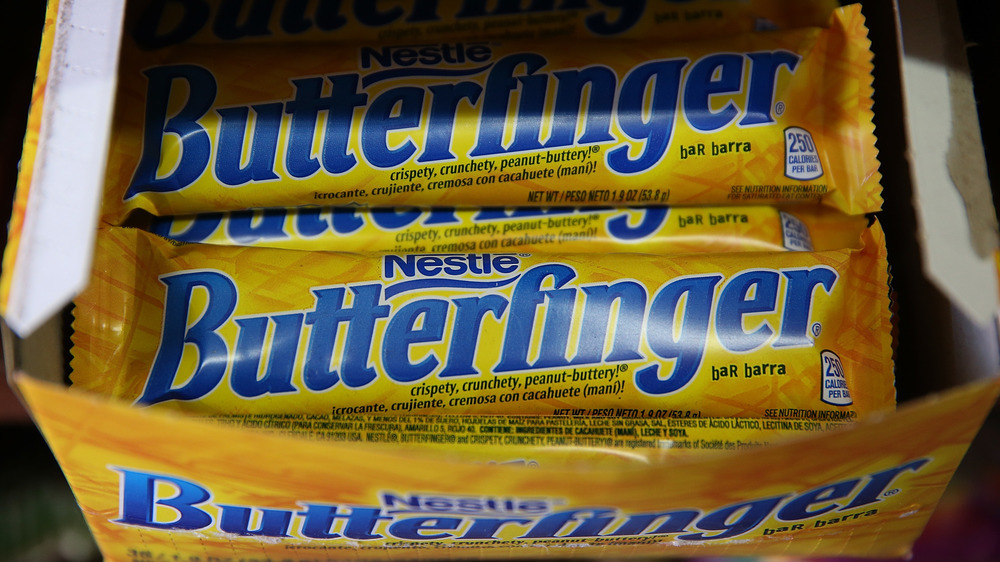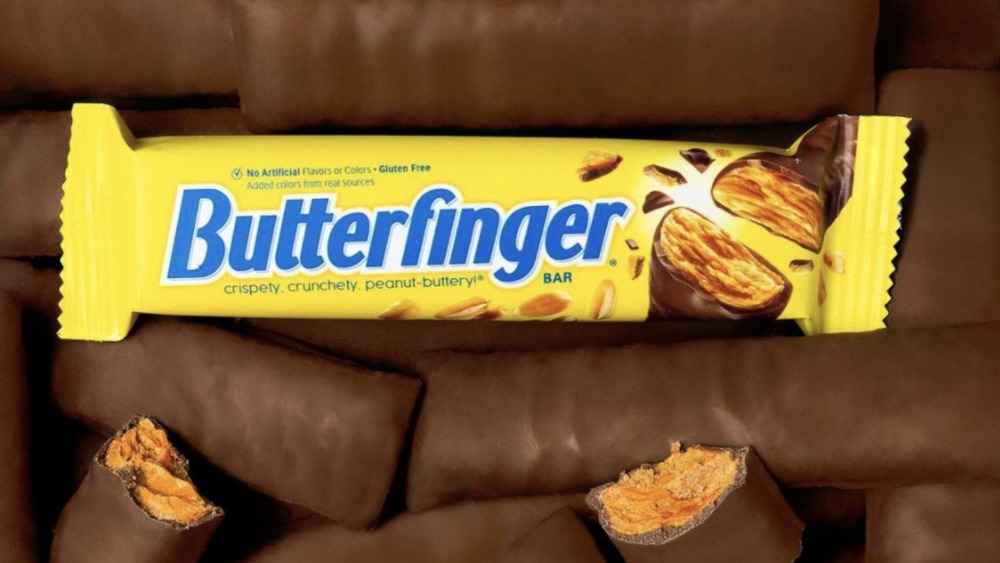What May Have Happened To The Original Butterfinger Recipe
Anyone with a sweet tooth has their favorite candy bar. For some, it might be the classic milk chocolate Hershey's. For others, it might be the crunchy, share-able Kit-Kat or the creamy, indulgent Reese's Peanut Butter Cup. Or it could be the cult-favorite Butterfinger. Dubbed one of the top Halloween candies of 2020, according to a recent survey by Premise, Butterfinger has long been a favorite among American adults and kids alike. Featuring a crispy peanut butter core covered in a milk chocolate coating, it's the perfect balance of sweet yet salty and smooth yet crunchy.
But the Butterfinger you love indulging in today isn't how it's always been (or tasted), according to urban legend. While the recognizable yellow wrapper has been on grocery store shelves for decades, the candy bar within has changed a few times over the years — especially during its earlier years. Here's what you never knew happened to the original Butterfinger recipe.
It got lost in translation
The Butterfinger bar was first invented by Otto Schnering in 1960 as a sequel to the wildly popular Baby Ruth bar (via Mental Floss). However, when Schnering's Curtiss Candy (the producers of Butterfinger) was sold to Nabisco in 1980, rumor has it that both the Butterfinger and Baby Ruth original recipes were lost during the transition phase (via eHow). Desperate to keep sales up and, more importantly, to keep fans happy, Nabisco engineers were able to quickly recreate the Butterfinger recipe to be similar yet not exactly the same as the original.
That wasn't the only time that the Butterfinger recipe has changed, either. In 2018, Butterfinger was acquired by Ferrara (the candy company behind Ferraro chocolates), who revamped the bar to include higher-quality ingredients. Not only did the peanuts get upgraded, but the recipe for the chocolate coating was redone to be smoother and more flavorful. Food and Wine said it isn't quite the same but it's pretty dang close.

